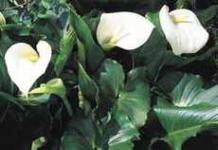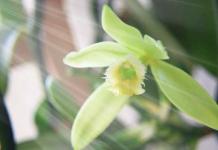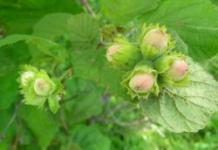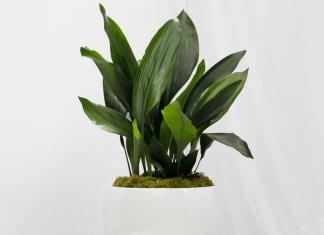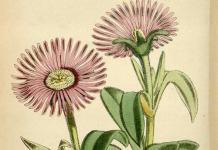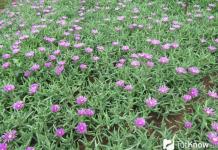Botanical crocuses Ruby Giant (Ruby Giant) beautiful flowers, reminiscent of a scattering of precious stones from under the white melting snow. bright flowers
botanical crocusesRuby Giant (Ruby Giant) beautiful flowers, reminiscent of a scattering of precious stones from under the white melting snow . Bright crocus flowers bring a sense of calm and positive emotions, a feeling of the arrival of spring.
flowering period botanical crocus Ruby Giant occurs in March-early April, forming graceful pale lilac flowers with a lighter petal base and bright yellow stamens. Crocus flower Ruby Giant bloom on a strong peduncle up to 10-15 cm high, has a pleasant aroma. The leaves are green with a white vein along the leaf; after flowering, the leaves grow and retain their decorative effect throughout the growing season. Botanical crocuses are widely used in all types of landscape design, when planted in discounts, alpine slides, and look spectacular in group plantings. Botanical crocuses are ideal as a potted plant, they are an excellent living gift for women on March 8th.
| Everyone can create a bright and picturesque flower garden, you just need to know which plants are combined with what and where it is best to place them in the garden. If your choice fell on gentle crocusRuby the Giant, you will not find better companions than you. Along with lilies of the valley, these flowers are among the first to bloom, so you can combine them in planting with your crocuses. Due to their low growth, these primroses are best suited for potting or container planting, as well as for decorating alpine slides and rockeries. Plant in groups of 15-20 to create flower islands, but if you want to completely cover the garden with these flowers, then you will need at least 70 pcs of primrose bulbs. |
Crocuses prefer sunny, wind-sheltered, loose, well-drained soil. Dig up crocuses in June after the leaves have dried. The recommended time for planting crocuses is August-September, when the bulbs are at rest. When planting crocus bulbs in pots, they are transferred to a dry, well-ventilated room with a temperature of 18-20C. Planting depth 5-15 cm depending on the size of the bulb, the distance between crocuses 7-10 cm apart. Reproduction of crocuses occurs by children - daughter corms, which are formed from buds sitting in the axils of the scales. Most crocuses are winter-hardy, but in autumn it is better to cover the planting of bulbs with leaves, which are removed with the advent of spring.
Delivery of crocuses Ruby Giant (Ruby Giant) carried out using the services of the Russian Post and transport companies, delivery by air mail and courier is possible.
In order to order and buy crocuses Ruby Giant (Ruby Giant) in our online store of seedlings and flowers, use the "Add to cart" button, after filling which, click "Place an order".
Only professional series of planting material are on sale, which will guaranteed variety, excellent quality and high potency. The price of crocuses is per package.
Delivery terms:
Sending orders with flower bulbs: from September 1 in autumn (shipping restrictions according to the customer's climate zone).
Open the door to gentle spring crocuses. The edges and clearings of forests are covered with a continuous multi-colored carpet, not being afraid of the February cold.
Description and features of crocus
Only the snow will melt to the floor to replace the snowdrops, appear crocus flowers(saffron). Elegant colors (white, blue mauve, yellow), goblet inflorescences pop up through the thawed patches.
The arrow with buds extends only 10 cm. If snowdrops are actively harvested for cutting, then crocuses are not suitable for such purposes.Flowering occurs in spring and autumn.
In the first group, the leaves jump out along with the arrows. Growth continues after flowering. In appearance, the leaves are rigid, linear, narrow. An original silver-white stripe runs right down the center.
The second group of autumn flowering throws out leaves long before flowering (June). The next month they turn yellow and die. Large inflorescences appear alone on peduncles.
Bulbous, perennial. Each corm may have 4 peduncles in the first vegetative period. Every year their number increases, hybrid varieties can have up to 10 arrows.

Planting and propagation of crocus
Saffron should be planted in open meadows, closed from the winds on all sides. Any soil is suitable, but not acidic. Dislikes wetlands, accumulations of snow. But light, organic, well-drained soil is what you need.
There are some nuances about organic - you can not use fresh manure during digging, only rotted.
To make good drainage, it is enough to add coarse sand to the top layer of the earth. If there is no river sand, fine gravel will do.
Bulbs should be prepared in advance for planting. As soon as the leaves wither, dig them up, hold them in the air for a while to dry. Then, keep in a dark place with a temperature of 20 degrees C.
A month before planting, keep in the refrigerator, and in September you can plant in open ground. If the region has a warm autumn, it is better to postpone planting to October. Corms should take root before frost, but in no case germinate. If the seat is chosen sunny, flowering will come in early spring.

There are crocuses that bloom in autumn. Then planting crocus flowers- mid summer.Flowers can be propagated by children, seeds. In order for the bulb to give more babies, it must be transplanted every year.
As a result, the mother bulb will form up to 2-3 children. Seeds are sown in the same way as children in the fall. Only flowering after the seed planting method will occur for 3-4 years.
Crocus flower at home grown for forcing. This is true for future holidays, such as March 8, Valentine's Day. The whole process from planting to the appearance of flowers takes 3 months. For this, large bulbs of hybrids are selected that bloom in spring. It could be Grand Leela, Jeanne d'Arc.
Several bulbs are planted in one flowerpot, without touching each other and the walls, covered with soil, sand on top, watered abundantly. Substrate: turf, leaf earth, sand. Store containers in a dark place with a temperature of 8 degrees C.

As soon as sprouts up to 5 cm appear, the roots will stick out of the drainage holes, the flowerpots are transferred to a consecrated place. The temperature at this moment should not be more than 15 degrees C.
The light will do its job - the plants will quickly begin to reach up. To prolong flowering time crocus flower in a pot up to 3 weeks, it is necessary to reduce the temperature to 0 degrees C at night. It is possible to take it out to an unheated terrace.
Crocus care
The plant is considered unpretentious and flower care crocus simple enough:
Watering should be done in the spring, if the winter was not snowy. True, the dried land encourages rapid flowering. With sufficient moisture, the plants will be much taller. Do not irrigate during dormancy, as crocuses prefer to rest in dry ground.
When shoots appear, the soil must be loosened and freed from weeds.
Top dressing. Crocuses love organics, but only in rotted form. It is added during digging. Accompany active growth with mineral components. The first top dressing should be carried out with dry formulations - sprinkle directly on the snow. The second, after flowering, the composition of liquid mineral fertilizers should contain potassium and phosphorus. Potassium contributes to the development of healthy bulbs, phosphorus ensures lush flowering.
The terms of digging, transplanting are dictated by the flowering of the species. Spring varieties - June, autumn - the second decade of July.
In non-snowy and cold regions, it is better to mulch plants. Fallen leaves, peat chips are well suited for this. In the spring, free from shelter.

Crocus flower how to care and fight diseases and pests.
rodents. They feed on bulbs in autumn, in winter. Rodents are also considered carriers of viral diseases, fungal infections. To protect against them, you should use plastic boxes. They are covered with them immediately after planting the bulbs in the fall and buried in the ground. A groove is made around, where preparations from mice are poured, covered with a layer of earth from above.
wireworms. Symptoms: the bulb is pierced through holes. In the fight against him, traps are used very successfully. A hole is made, where a layer of fresh grass, straw is poured, covered with a lid of boards on top. After some time, the wireworms will lay larvae in the hole. Since they are quite satisfied with the nutrient medium, warm. Pull out the contents of the hole and burn. Set traps until complete destruction.
Aphid. Signs: twisted shoots, the formation of honeydew. For preventive purposes, planting material is treated before planting. Fight: spray the plant with karbofos.
Viral diseases. The cause and carriers of the virus are aphids, mites, thrips. In order to prevent it is necessary to deal with pests in a timely manner. If, nevertheless, crocuses are affected, they must be uprooted and burned, since viral diseases are incurable.
fungal diseases cause mold and mildew. The reason is improper care, pests, warm weather. Fight: destroy infected specimens, treat living plants with insecticides.
types of crocus
Crocuses, flowers can be divided into several categories. One of these groups includes plants with small inflorescences. Another group is distinguished by large buds, which also includes hybrid varieties.
And here what colors are crocuses, for example, hybrid and botanical varieties is not difficult to answer. The petals of the inflorescences amaze with an unusually different range: purple, yellow, white, bicolor.

In the photo two-color crocuses
spring crocuses - photo of flowers:
Ruby Giant Ruby (Giant). The variety is derived from the species Tommasini. Inflorescences are lilac or pink along the outer edge of the petal and a white tint in the center. Against the background of the petals, bright yellow stamens stand out in contrast.

In the photo, crocuses Ruby Giant
return(verni). An early variety of the Tommasini species. Funnel-shaped purple buds with bright yellow stamens. spring flowers crocuses appear in February.

Verni crocus flower
Golden flowered saffron:
Flavi(flavi). A distinctive feature of the golden-flowered species is abundant flowering. Moreover, the corm throws out up to 10 peduncles with buds. The leaves are light green, narrow, with longitudinal stripes.

In the photo, crocus flavi
Pickwick(Pickwick). The variety belongs to the Dutch species. The ancestors of its appearance are immediately two types of previous spring and yellow. Purple streaks stand out on a white field.

crocus pickwick flower
Joan of Ark(Joan of Arc). Monochromatic buds will not leave you indifferent with their large, snow-white inflorescence. The variety belongs to the Dutch species. Among flower growers it is very popular for unpretentiousness and beauty.

In the photo, crocus Joan of Ark
Crocuses blooming in autumn:
Blue Bird(Blue Bird). The inflorescences of a blue-colored hybrid, the name translates as "blue bird", although it refers to a golden-colored species. Flowering period August-September. Unpretentious, but rarely on sale. Flower growers still prefer spring flowering plants.

Crocus Blue Bird
Crocus beautiful(C.speciosus). The peculiarity of the species is that flower stalks jump out of the ground in September, without waiting for the leaves. Those, in turn, will appear only in the spring, wilting will come in July. So there are arrows with magnificent large inflorescences of a light purple hue with dark veins.

In the photo, a beautiful crocus
Crocus sativa(Cultural saffron). Purple six petal flower. Arrows with buds grow without leaves. An interesting detail is that each inflorescence is on the peduncle for only two days.

Crocus sativa (Cultivated saffron)
The full cycle of autumn flowering is 15 days. The stigmas of the petals are of value in cooking, pharmaceuticals. The columns are collected, dried. If you try to determine the aroma of dry columns, then it resembles a mixed smell of bay leaf, nutmeg, coriander,.
Buy a crocus flower in a pot can be in a flower shop or ordered through an online store. crocus flower price varies from 400 rubles and above. If you buy bulbs, then they will appear on the shelves en masse in July.
Crocuses are one of the very first early-flowering spring small-bulb flowers. Currently, more than one hundred species and varieties of these beautiful plants are known. However, in our gardens and parks they are undeservedly rare. Some believe that it is pointless to plant them, because they bloom too early, when no one else goes to the country. Others classify them as too exotic plants. Having carefully considered all the arguments and photos below, you can easily see that this is not entirely true.
Crocus is a bulbous plant belonging to the iris (iris) family. It grows in Europe, Western and Central Asia. Blooming crocuses are a truly impressive and very beautiful sight. These are one of the first heralds of the awakening of nature and the final arrival of spring. In the field, they bloom much earlier than most tulips, daffodils and hyacinths. Plant a dozen 3-4 crocuses in different parts of your garden, and even better - several hundred different varieties of crocuses and other early spring small-bulbous ones, and spring will come to your site a few weeks earlier than to other inhabitants of your garden partnership. But you still have to go to the dacha, starting from the end of March - the beginning of April, to open roses, conifers and other plants, put things in order on the site and make the first spring pruning of plants.
Crocuses usually have small corms that are flat, flat-round or spherical in shape, covered with a membranous sheath. The flowers are goblet, directed upwards, with 6 petals on small shortened stems. Blooming flowers can have a star-shaped or cupped shape and a wide variety of colors. The leaves are small and narrow, linear, dark green, often with a white stripe or veining in the center. Every year, the old corm is replaced, and in its place 2-5 new corms and a baby are formed. Flowers are pollinated by insects. The ovary is formed underground, but over time, the fruit (a trihedral box with seeds) is pushed to the surface, where the crocus seeds ripen. If they are not collected in time, self-seeding may occur.
Crocus bulbs are edible, so they often attract a variety of small rodents. They can be boiled, baked or prepared in some other way, but the most valuable part of the plant is their stigmas, from which a very expensive and tasty spice, medicine and natural dye are prepared.
The species diversity of crocuses is simply amazing. There are a lot of not only different species, but also many different varieties and hybrids created on their basis are known. There are quite a few different classifications of this interesting plant, but all of them, as a rule, are too cumbersome and not always perfect. In my opinion, the most simple and perfect is the classification proposed by D. G. Hession. He divided all crocuses into 3 groups, differing in flowering time and flower size.
early spring crocuses
This group includes several species, but the most widely known and common - Crocus aureus, or golden (Crocuschrysanthus), which is often called the snow crocus because of its early flowering .
Its flowers and leaves reach a height of 8-9 cm. Its flowers are medium-sized, of various shades and colors, mostly yellow, cream and blue, with clearly visible stigmas. They appear very early in spring, sometimes even simultaneously with snowdrops, practically among half-melted snow. This bloom is very spectacular, as it is the very first and brightest, and heralds the final arrival of spring. And although frosts will return repeatedly and even snow will fall several times, nothing will stop the development of this beauty. This species is distinguished not only by abundant flowering, but also by a pleasant weak aroma. Known varieties - representatives of this group: Blue Pearl, blue-blue with a yellow bottom; E. A. Bowles - with large dark yellow flowers for this species; Cream Beauty - with creamy yellow with orange stigmas; Princess Beatrix, blue with yellow base; Snowbunting is white with a yellow base. And in two or three weeks, depending on weather conditions, larger spring-blooming crocuses will bloom.
spring blooming crocuses
These are the most famous and widespread crocuses in our country. They are also called large-flowered or giant crocuses. They bloom in March - April, a week - two later than the representatives of the previous group. Moreover, all plants of this group are noticeably larger than the varieties of the Chrysanthus group. Their height can reach 12-15 cm. Most of the well-known large-flowered hybrid crocuses are based on spring crocus(Crocus vernus) by crossing different species. The flowers of this group have a wide variety of colors and shades - from snow-white to light purple and dark purple, not only yellow.
The most famous varieties of this group: Jeanna D "Arc - snow-white flowers with a purple base; King of Striped, Pickwick and Striped Beauty - variegated striped varieties with purple-white color. Varieties Vanguard, Remembrance and Flower Record have a lilac or purple-purple color various shades.
The variety of spring-flowering crocuses complements the large-flowered variety crocus yellow (Crocus flavus) found under various names - Golden Yellow, Yellow Mamoth, Lagest Yellow. Elegant color - purple with a yellow bottom, varieties differ crocus sieber (Crocus sieberi). The tricolor variety Tricolor looks especially cheerful, in which a yellow spot at the base of the purple petals is also surrounded by a white border.
autumn blooming crocuses
Depending on the species and region of growth, flowering in this group of crocuses lasts from September to early December. However, in autumn-flowering crocuses, leaves, like in all other species, appear in the spring and die off around mid-June. This group includes: Crocus pale ocher (Crocusochroleucus), with small creamy flowers, Crocus hololithous (Crocus nudiflorus), with purple flowers Crocus longiflorum (Crocus longiflorus), blooming in November Crocus flattened (Crocus laeviatus), one of the late bloomers.
Crocus beautiful (Crocusspeciosus)- the most common type of autumn-flowering crocuses. It blooms in September, before all other crocuses. Flowers up to 20 cm high, with small longitudinal veins, purple, lilac, blue and white. Very unpretentious. Growing, over time, it can occupy very large areas. All autumn crocuses look good against the background of various stonecrops, perennial asters and, especially, brightly colored ornamental shrubs or various conifers.
A special place among autumn crocuses is Crocus sativa, or saffron (Crocus sativus). It is his stigmas with stamens that are the valuable medicine, seasoning and dye, which is obtained during industrial cultivation and sold for big money. Dried stigmas of saffron contain essential oils, calcium, phosphorus, glycosides, vitamins, and the dye crocin, which dissolves in water. This dye was used to dye clothes in bright sunny colors long before our era. As a spice, saffron has a bitter-spicy taste and a very pronounced smell. It is added to flour products, in the preparation of meat, fish, and various rice dishes.
Crocuses in the landscape
Crocus bulbs can be found on sale from mid-August until almost December. Any blooming crocuses look very good in small groups, creating their own unique pattern. Usually they reach only 8 - 15 cm in height, and therefore they are practically of no interest to vandals, and they raise the mood for several weeks in advance! Past my windows, dozens of mothers, grandparents are leading their kids to kindergarten. And when every year dozens of crocuses bloom in front of my windows, kids and their mothers simply cannot be torn off from this spectacle!
So, let's look at some of the most common options for using crocuses in garden, park and backyard design. Due to their small height, amazing unpretentiousness and a large number of very bright and colorful colors, crocuses are ideal for small flower beds in front of residential buildings and offices, for rockeries and alpine slides. At the same time, their flowers often have a delicate pleasant aroma that attracts the first spring insects and sometimes even butterflies!
Crocuses will look equally attractive along the edge of borders, along paths in the garden, in parks, in the foreground of mixborders and in floor vases. The flowering time of crocus in the middle lane usually falls on the end of March - the middle or the end of April and can last up to five to six weeks with the right selection of varieties. Skillfully choosing a place for planting, you can significantly extend the period of their flowering. For example, at the southern wall of the house they will bloom 2-3 weeks earlier than in some shady place, and vice versa, flowering will be delayed if the same varieties are planted under tall trees, near the northern wall, a blank fence or under tall and dense conifers. .
Crocuses can be planted alone, creating mass landscape plantings, or together with early species or botanical tulips, low and medium daffodils and hyacinths. They will perfectly fit into any, even a shady corner of a garden or park, will look appropriate and original on any early spring flower bed or the edge of a nearby forest.
Few garden plants can compare in beauty and grace with blooming crocuses, pulling their bright heads towards the rays of the gentle sun. The main participants in the beginning of the grandiose early spring show, they are so funny and diverse that sometimes it is not at all easy to choose the species and varieties that suit you.
Crocuses reproduce quite easily and quickly. Usually the multiplication factor is 1:2…1:5. Therefore, once every three to four years, overgrown nests have to be divided. Dividing should begin when the foliage of the plants is completely dry. As a rule, this is done towards the end of June - beginning of July.
If your crocuses are planted in regularly mowed lawns, then the first mowing of the lawn should be done as late as possible so that the corms have time to store as many nutrients as possible through their variegated green leaves for abundant and friendly flowering next year. But as soon as you notice that the foliage of crocuses has begun to turn a little yellow and dry out, feel free to carry out the first haircut! Although my personal experience suggests that the substantially cut leaves remaining after the shearing still continue to develop and increase the green mass for some time, continuing to store useful substances for the next flowering, albeit not as intensively as they could do without a haircut. However, there is always another way out - to plant these beautiful and funny plants every year in the fall, because they, as a rule, are not that expensive, especially for those who can afford a large, beautiful and well-groomed lawn on the site.
Storing bulbs of early and spring flowering crocuses until planting in late September - October (and even in extreme cases, in early November), is similar to storing other bulbs. This is digging, drying in the open air in the shade, followed by storage in a warm (more than + 20 ... 25 0 C) and dry room. Autumn crocuses, as a rule, are planted immediately after purchase - in August-October. But it is better, if possible, to do this in August - early September.
Crocuses are not whimsical and grow on almost any well-cultivated soil, but develop better on light, well-drained and humus-rich substrates. All crocuses prefer well-lit areas, although many species and varieties are quite tolerant of shade and partial shade. But often they have time to fade long before foliage appears on many fruit trees and ornamental shrubs.
Usually, under all bulbs, it is recommended to add coarse-grained river sand with a low content of clay inclusions, as well as well-rotted manure. The planting depth of crocuses, like most bulbs, is approximately 2.5-3 bulb heights, counting from the bottom. The distance when planting between plants depends on the type and purpose of planting and varies from 3 to 10 cm. Crocuses respond well to mineral dressings. The first spring top dressing is carried out almost in the snow, the second - just before flowering. In the first case, a slight predominance of nitrogen and phosphorus is desirable, in the second - phosphorus and potassium. Consumption of fertilizers, on average, 30-40 g/sq.m.
Good luck with your experiments in growing these unusually beautiful plants!
What do these spring flowers look like:
Large-flowered crocuses or Dutch crocus hybrids were bred at the end of the 19th century, as a result of crossing spring, yellow and narrow-leaved crocuses. Unlike wild-growing species, they bloom a little later - from March to April. But what kind of flowers do they have? This is just a miracle! They are large and bright: pot-bellied cups of flowers and reach a height of 5-10 cm. The petals are painted in the most intense colors: purple, purple, yellow, blue, lilac. Snow-white and striped two-tone varieties are also common. In the center are contrasting bright yellow stamens. Flowers solitary or in "bouquets" of 2-3 pieces.
Large-flowered crocuses are one of the most hardy types of crocuses. Therefore, they should grow in every garden! The foliage of large-flowered crocuses appears at the end of flowering. Outwardly, the leaves look like blades of grass. In the center of each leaf there is a light strip.
Dutch large-flowered crocus varieties used for distillation at home. If you are new to forcing, we recommend purchasing Dutch planting material. These bulbs are already sorted and prepared for forcing. Having landed them, you will not have problems with distillation. Such bulbs in specialized stores can be purchased until the New Year.
To have blooming to large-flowered crocuses for the New Year, purchase the bulbs at the end of August - the first half of September, and immediately start cooling. This is done so that the bulbs "believe" that winter has come. If you need blooming crocuses by March 8, just increase the cooling period. You can calculate the flowering time in advance. Bulbs cool and take root for about three months.
When choosing planting material, pay attention to the appearance of the bulbs so that there is no damage (rot or mold), they should be dense to the touch.
Application:
These crocuses look good in group plantings in flowerbeds, lawns, under the crowns of trees, borders and rock gardens. Suitable for growing in pots and tubs. Grow in full sun or partial shade. They bloom for a long time - from 10 to 17 days, depending on the variety. To save space in a flower bed or container, crocuses can be planted on top of other bulbous plants. Divide and replant every four to five years. Attention! Mice can eat corms. The flowering period is March-April. Plant height - 8-15 cm.
The best varieties :
Crocus vernus pickwick (Pick Wick)

Crocus Yellow Giant – New! Hybrid. Crocus "Yellow Giant" is absolutely amazing! This variety has sunny golden yellow flowers with an orange tinted centre. It multiplies quickly and blooms very early. Its color, winter hardiness and early flowering make this plant popular and in demand among flower growers. Other name: spring saffron. A perennial ephemeroid plant that belongs to the Kasatikov family. This is one of the late flowering crocuses. This variety captivates with large elegant flowers! Each corm produces several glossy golden yellow flowers. They open on sunny days and close on rainy days and at night. The shape of the flowers is cup-shaped. The stigmas are yellow-orange. The leaves are shiny, narrow, dark green. This hybrid is ideal for growing in containers. Plant height - about 10 cm, width - 5 cm. It blooms for 3 weeks in March-April.
Crocus vernus Flower Record (Flaver Record) - this flower attracts bees, butterflies, birds to the garden, as their large flowers of light blue with a hint of purple are emphasized by yellow-hot, thin queens that can be seen from afar. They reach a height of 12 cm and look great in a clearing or on an alpine hill. Bloom in April.
Crocus vernus Jeanne d' Arc (Jeanne d'Arc) This plant is suitable for growing both indoors and outdoors. It has snow-white flowers with a pale lilac base. They reach a height of 8-15 cm and look great in a clearing or on an alpine hill. Bloom in April.

Crocus Remembrance - hybrid. Other name: Spring saffron. This is one of the late flowering crocuses. First appeared on the market in 1925. This variety captivates with large elegant flowers! Each corm forms several purple-lilac flowers with a silvery sheen. They open in sunny weather or when it is clear and close in rainy weather and at night. The shape of the flowers is cup-shaped. The stigmas are yellow-orange. The leaves are shiny, narrow, dark green. They begin to grow from the bulb during flowering, and fully develop after flowering. It looks good in groups on lawns, in rockeries, in a flower bed in compositions with other early-flowering low-growing plants. Ideal for growing in containers. Plant height - 10-15 cm, width - 5 cm. It blooms for 3 weeks in March-April.
Crocus Grand Maitre - Hybrid. Giant crocus! Other name: Spring saffron. An ephemeroid plant that belongs to the Kasatikov family. Released in 1924. This is one of the late flowering crocuses. And you can't take your eyes off the beautiful flowers! They are large, bell-shaped, funnel-shaped, lavender blue with a slight hint of purple. The branched stigmas that protrude from the corolla are orange in color. They create a bright accent and attract attention. The leaves are shiny, narrow, dark green in color, with a silvery-white mark in the middle of the leaf. They begin to grow from the bulb during flowering, and fully develop after flowering. Corms are large, flattened. They usually produce 2 flowers. This variety grows up to 8-15 cm in height and up to 7 cm in width. Ideal for growing outdoors and in containers. Flowering time is mid-spring.

Crocus King of the Striped (King of the Striped) - white petals with lilac-purple stripes and yellow stamens look very beautiful. When closed, the crocus flower resembles a glass in its shape, and when open, it resembles an asterisk. In height, these flowers reach 8-13 cm. They bloom in March - April.
Crocus Yellow Giant – New! Hybrid. Crocus "Yellow Giant" is absolutely amazing! This variety has sunny golden yellow flowers with an orange tinted centre. It multiplies quickly and blooms very early. Its color, winter hardiness and early flowering make this plant popular and in demand among flower growers. This is one of the late flowering crocuses. This variety captivates with large elegant flowers! Each corm forms several golden yellow flowers with a sheen. They open on sunny days and close on rainy days and at night. The shape of the flowers is cup-shaped. The stigmas are yellow-orange. The leaves are shiny, narrow, dark green. Plant height - about 10 cm, width - 5 cm. It blooms for 3 weeks in March-April.
Crocus Flower Record(Flower Record) - this flower attracts bees, butterflies, birds, as their large flowers of light blue with a hint of purple are emphasized by yellow-hot, thin queens that can be seen from afar. Crocus is one of the earliest flowers to appear after winter. They reach a height of 12 cm and look great in a clearing or on an alpine hill. Bloom in April.
Crocus vernus pickwick (Pick Wick) - small light petals with purple plumage look good on an alpine hill or in flower beds. It is possible to grow crocus in pots. They reach a height of 8-13 cm. They usually bloom in April.
Crocus vernus Negro Boy (Negro boy) - dark purple petals with a purple-black base are combined into one flower with bright yellow stamens. They reach a height of 10 - 15 cm and look great in a clearing or on an alpine hill. Blooms in March - April. The best time for planting is August-September, when the plant is still dormant. Optis = low time for planting: autumn, until early November.
Crocus (Crocus) or saffron is a herbaceous corm plant of the Iris family. The driving habitat is the steppes, forests, meadows of South, North, Central Europe, the Mediterranean, the Middle East, Asia Minor and Central Asia.
The word "crocus" in Greek means "fiber, thread", and in Arabic "saffron" is "yellow" (yellow is the color of the stigmas of the flower). Crocus was first mentioned in Egyptian papyri.
In floriculture, crocus is known as spring primrose, but there are also species that bloom in autumn.
Botanical description
Crocus is a low-growing herbaceous plant about 10 cm high. Underground part: a flattened round bulb about 3 cm in diameter, shrouded in scales, a bundle of fibrous roots is attached to the bulb. There is no stem.
Leaflets linear, narrow, appear before or after flowering. A single goblet-shaped corolla 2-5 cm in diameter appears on a leafless peduncle. They can be painted white, cream, blue, purple, purple, yellow, orange, there are two-tone, decorated with spots, stripes. In general, the flowering period lasts 2-3 weeks.
How to plant crocuses in the garden
- in open ground, spring crocuses are carried out in the fall, autumn-flowering - in the summer.
- Choose a sunny site, they will normally grow in partial shade, shade.
- The soil needs nutritious, loose, light.
- For digging the site, add rotted manure, compost or peat with lime. Add ash to clay soil.

- Plant the bulb to a depth of 2 times its size, if the soil is heavy - a depth of 1 size is sufficient.
- Keep a distance of 7-10 cm between plants. Do not thicken plantings, because crocuses can grow in one place for 3-5 years, forming many "children" - the site will turn into a continuous carpet of flowers.
- Water well after planting and mulch the soil with fine organic matter or humus.

You can plant crocuses for distillation. Forcing is a way to make a plant bloom indoors out of season. Dutch large-flowered varieties are best suited.
- Take bulbs of approximately the same size, plant 5-10 pieces in a shallow bowl.
- The soil needs loose, water-, breathable, neutral reaction.

- Plant the bulbs evenly, slightly pressing into the soil and leaving almost no space between them, sprinkle with earth to the level of the growing point of the above-ground part, water moderately.
- Keep in this form in a cool place for 3-4 months at a temperature of +0 to +10°C.
- In advance, a week or two before the desired flowering date, remove the crocuses and place in a warm, bright place, open and water.
- Soon shoots will appear and the plants will bloom.

- After forcing the bulbs, do not throw them away: continue to water, feed with complex mineral fertilizers. When the leaves begin to turn yellow, gradually reduce watering until it stops completely. After the leaves dry, remove the bulbs, clean them from the soil, wrap them in a napkin, place in a cardboard box, store in a dry, dark place until planting in open ground.
Crocus care in the garden
Crocuses are very easy to care for.
Watering
If the winter was snowless, and the spring without rain, a need arises. In general, crocuses are drought tolerant. Periodically loosen the soil, remove weeds.
top dressing
- During active growth, apply complex mineral fertilizers; fresh organic matter is not recommended.
- Make more potassium and phosphorus, an excess of nitrogen (especially in wet weather) is fraught with fungal diseases.
- Carry out the first top dressing before flowering (30-40 g of fertilizer per 1 m²), the second - during flowering.
After flowering
When the spring crocuses fade and their leaves turn yellow, you can forget about them until the next season. Treat autumn-blooming crocuses in the same way.
After flowering, wilted inflorescences should be cut off. Green leaves will decorate the garden for a long time. When they dry, dig up the bulbs if necessary.
The remaining crocuses to winter for the winter should be mulched with peat or dry leaves.
When to dig up crocus bulbs?

The need for digging occurs after 3-4 years. During this time, the mother bulb will be overgrown with many daughter bulbs that will interfere with each other, the flowers will become small. You can dig, replant, divide the bulbs more often.
You can dig up spring-blooming crocuses from July to September, autumn-blooming - from June to August.
Dig up the bulbs, remove the soil, remove dead scales, lay them out in one layer in a box or cardboard box. Ideal storage: keep the air temperature at 22 ºC until August, lower it to 20 ºC from August, and lower it to 15 ºC from the middle of the month. Such conditions are provided in specialized farms. At home, you can store at room temperature in a dark, dry place with good ventilation until planting in open ground.
Propagation of crocus bulbs

Reproduction is carried out by the separation of daughter bulbs. Landing is carried out, observing the agrotechnics described earlier. Flowering will occur in the 3rd or 4th year of life, depending on the variety, species.
Growing crocuses from seeds

Spring flowering crocuses can be propagated. Flowering of crocuses grown from seeds will occur approximately 4-5 years after planting in open ground, so this propagation method is not very popular.
- You can sow before winter (autumn) or grow seedlings in spring (sow in mid-March to early April).
- In both cases, the seeds must first be soaked in a growth stimulator for 30-40 minutes, then held in a weak solution of potassium permanganate.
- For sowing seedlings, seeds must also be stratified.
- Sow the seeds less often in a bowl of wet sand, do not bury them in the soil, but simply spread them over the surface. Then cover with foil and place in the vegetable section of the refrigerator for 2-3 weeks, or dig in the garden and cover with spunbond.
- Then remove the bowl and place in a warm, lit place.

- With the emergence of seedlings, carry out the first watering with a fine mist sprayer.
- The grown plants are seated in separate pots or in a permanent place in the garden.
Diseases and pests of crocuses
Penicillium, sclerocyl, gray rot, fusarium - diseases that affect crocuses. This is facilitated by warm damp weather. If you see flattened crocus flowers covered with gray spots - a sign of a viral disease. Affected plants must be dug up and destroyed.
Treat the soil with a fungicide. To avoid such problems, inspect the bulbs for damage before planting. If any damage is found, sprinkle this place with ash or treat with a fungicide, dry it.
Bulbs can damage wireworms (larvae of the click beetle). They are yellow and hard to the touch. At the end of April-beginning of May, spread last year's unripened grass, hay or straw around the site, moisten and cover with boards. It works like a trap. Burn them at the stake along with the larvae.
Collect slugs by hand.
Field mice can eat succulent crocus bulbs. To prevent this from happening, it is better to use different landing zones (several groups in different areas). In the event of an invasion, use ultrasonic repellent.
Types and varieties of crocus with photos and names
Crocuses are classified into 15 groups. The first is autumn-flowering, the rest are spring-flowering. Dutch hybrids, the Chrysanthus group, are the most popular varieties in commerce.
Consider spring flowering.

Reaches a height of 17 cm. It has become the basis for breeding many species and varieties. Leaves are standard. Funnel-shaped flowers are painted white or purple. Blooms for about a month.
Crocus two-flowered Crocus biflorus

The corolla can be pure white, white with brown-purple stripes, white inside and brown-purple outside, lilac-blue with brown spots on the outside.
Crocus golden Crocus chrysanthus

Reaches a height of 20 cm. Golden-yellow flowers have an orange throat.
Varieties:
- Blue Bonnet - has large (3 cm in diameter) flowers of pale blue color.
- Nanette - yellow-cream corollas are decorated on the outside with purple stripes.
- I. G. Bowels - a large corolla is painted bright yellow inside, brownish outside.
Crocus tommasinianus Crocus tommasinianus

Perianths are pink-lilac, a white border may pass along the edge. The opened corolla takes the form of a star. From one bulb 1-3 peduncles appear.
Popular varieties:
- Lylek Beauty - the corollas are about 3 cm in diameter. The petals are oblong, the color is lilac: darker outside and lighter inside.
- Whitewell Purple - the opened flowers look almost flat, their diameter is 4 cm. The color is lilac-violet.
autumn blooming crocuses
Crocus beautiful Crocus speciosus

The oblong leaves are extended by 30 cm. Large flowers up to 7 cm in diameter are painted in a lilac-violet hue, there are longitudinal veins of a purple hue. There are forms with white, blue, dark blue, lilac, light purple colors.
The best varieties are:
- Albus - snow-white flowers.
- Artabir - has flowers of a delicate blue hue with dark veins.
- Oksinan - has flowers of a violet-blue color.
Crocus pretty Crocus pulchellus

The height is 7-10 cm. Light purple corollas with stripes of a darker shade reach a diameter of 6-8 cm.
Crocus banatsky Crocus banaticus

Leaves of a silvery-gray color are stretched 15 cm in length. Flowers light purple, large.
Among the autumn-blooming crocuses, it should be noted: Sharoyan, Pallas, Gulimi, hololithous, medium, lattice, yellow-white, Kardukhor, Kochi, Cartwright.
Dutch crocus hybrids

Crocus white photo
Spring blooming crocuses with large flowers. There are more than 50 of them. By color they are divided into groups:
- Pure or white, having a spot of various shades at the base.
- Violet, lilac, lilac flowers.
- They have a striped, lattice color.
Their coloring starts in May and lasts 10-17 days.
In temperate climates, the following varieties grow well:
- Albion is a white flower with a diameter of 4 cm, the length of the tube reaches 5 cm, covered with strokes of a purple hue.
- Vanguard - has bluish-lilac flowers with spots of a darker shade.
- Jubilee - at the base of the corolla there is a clear light purple spot, the corollas are blue with a purple tint.
- Sniper Banner - light grayish-lilac petals inside are covered with a dense mesh of lilac hue.
- Kathleen Parlow - white flowers with touches of lilac.
- Chrysanthus - hybrids that bloom in spring.
The most famous varieties:
- Gypsy Girl - Corolla light yellow on the inside and creamy yellow on the outside. The cream-coloured pipe is adorned with touches of dusty lilac.
- Marietta - the spot at the base of the corolla is greenish, the corollas are dark cream, stripes of a dark lilac shade pass outside, the tube is gray-green.
- Lady Killer: the inner lobes are white, the outer lobes are white inside, and on the outside they are dark purple, have a white border and a bluish speck at the base.
- Saturnus is a creamy yellow flower with a bright yellow throat. The outer lobes are covered with thick strokes of a lilac hue.














